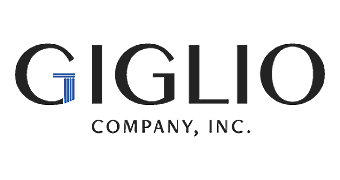Dismiss First Impressions
It’s been said that you only have one chance to make a first impression. You can change that for your direct reports! Read more
It’s been said that you only have one chance to make a first impression. You can change that for your direct reports! Read more
Too often leaders get blindsided with direct reports who leave abruptly. Yet, upon the exit interview, HR realizes the issues that catalyzed the departure had been brewing for months. It’s a divorce, business style.
For the leader, departures like these are quite painful and force the leader to do a post mortem in haste. What often gets decided was that the exec just couldn’t take the pace or didn’t have what it really takes. In other words, it was their fault and nothing needs to change.
Often this couldn’t be further from the truth.
Too often leaders who rely on their lieutenants over-use them. They are initially impressed with the preemptive abilities of their direct and assume they can handle double the work from their great performance. While the direct has earned a high degree of confidence, that doesn’t mean he/she can handle an increased workload.
Leaders need to stop right there.
They need to carefully assess their direct’s skills and regularly meet with them to mutually determine this increase in work/responsibilities to insure it’s correctly introduced, welcomed and achievable. This is mission-critical so that the direct embraces the lift in their work without one day coming to work and realizing it’s just become a factory.
How you avoid the factory-like climate is by regularly meeting with your direct and listening to them. I mean really listening to them. Listen without any predetermined opinion, listen for what’s important to them, listen for their challenges, listen for their dreams.
Until you know their feelings you can’t shape their work into the rewarding career they and you truly want.
Recently, I have been working with quite a few CEOs, synthesizing important messages and distinctions about their respective organizations. Content is king, of course, but too much of a good thing can dilute a message to the point that is loses all meaning. This is where the power of three comes into play!
I expect clients to be deeply connected to their message. That’s a good start. If you don’t believe in what you are saying and in the value you are presenting, then you may as well go home. You aren’t going to win any converts today!
But once you craft a message in which you believe strongly, that message can blur and lose its allure from adding too much data. In making your point, more is not better…synthesis is.
Parcel the message into three overarching points much like chapters in a book. Three key supporting facts will make it easier for your audience to digest what you are saying. It is quite the opposite of the presentations most of us have had to endure when a person presents bullet point after bullet point, never really establishing a main idea and losing the audience in a quagmire of details. Have details ready if asked but, if you are making strong, well-reasoned statements, you will be having a dialogue that is a two-way street, leading to a partner-like relationship rather than a client-vendor one.
Try answering that question the next time you are putting together a presentation or having a client conversation. If you can answer the question with specifics, you are going to be far more likely to capture and keep your client’s attention. And once you have that, you can establish the trust we speak about that is only experienced by advisors who create real value for their clients.
Try it and let me know what you discover. You can leave a comment below and I will respond!
Taking your seat at the table in business can be daunting.
There are naysayers, skeptics, and executives who feel their voice is the only voice required at that table. Read more
In business, much of our time is devoted to maintaining and growing our client/customer base. It’s essential to any company’s long-term prosperity. But managing the clients we already have is just as critical. And in those cases, it is more important that you are followed, rather than being right. Read more
Every time you observe a Direct’ s client interaction, realize it’s an opportunity for you to coach and develop. Too often we’ll forget to debrief a Direct on what they did well and what they can strengthen. If you coach them correctly, they may lead you to new ways to help them develop. Read more
Picking up from last week’s post about fitting in as a new manager, let’s look at ways to provide direction and shape a Direct’s behavior. Your organization believes you can develop and lead people. Do you believe it?
Many of my clients are quick-learning, driven executives. Often, though, I stress the importance of teaching directs how to accomplish a task/project versus telling them how to accomplish it or worse, doing it for them. Read more
In my book I talk about how important the voir dire process is to lawyers. In fact, a dear lawyer friend of mine has said, “a trial is won or lost in the voir dire process.” So, are you winning your clients over with your questions?
During the voir dire stage of a trial, lawyers get their one chance to interact with a juror to observe how they think and what their values are to determine how to present/shape the facts of their case. It is this investigation where they will discover new ways to present information that is likely to resonate with the jury. Critical!!
Fast forward to us. I recently wrote about credentialing yourself with your clients. It is the act of demonstrating your knowledge by how you engage with them. One key element is about asking smart, researched, killer open-ended questions that illustrate your diligence performed prior to a client interaction, whether you are persuading or informing them. It’s also a way to “lead the witness” towards the solution you have for their issues!
Here’s a relevant case in point that illustrates this skill:
A client laments they need to put a plan in place for their team to succeed. An easy yet ineffective question to ask is “How will you format the plan?”
A smart question to ask is: “Why is this mission critical now?” Here you will understand what’s essential to your client versus what they’ve been planning. You will know why, not just what, they are planning.
Your client then may say, “We need better team compliance with our process,” to which you might ask, “Any challenges to this?” I would suggest a stronger approach, such as asking, “How has this lack of compliance hurt you organization? For how long?”
I trust you are tracking the progression of establishing public testimony to then synthesize to segue to your idea.
That’s great credentialing!
By the way, since I referenced my book above, you can take a look at it on Amazon.com. Though I wrote it a few years ago, the lessons in it are as relevant today as they were then. Hope you enjoy it.
To paraphrase an often used quote, “Doing the same thing over and over again and expecting different results” is what I believe is the definition of career stagnation. So often in coaching executives, a client and I come to a discovery; in order to grow, a person must give up a certain part of their business behavior to achieve their development goals. Read more

